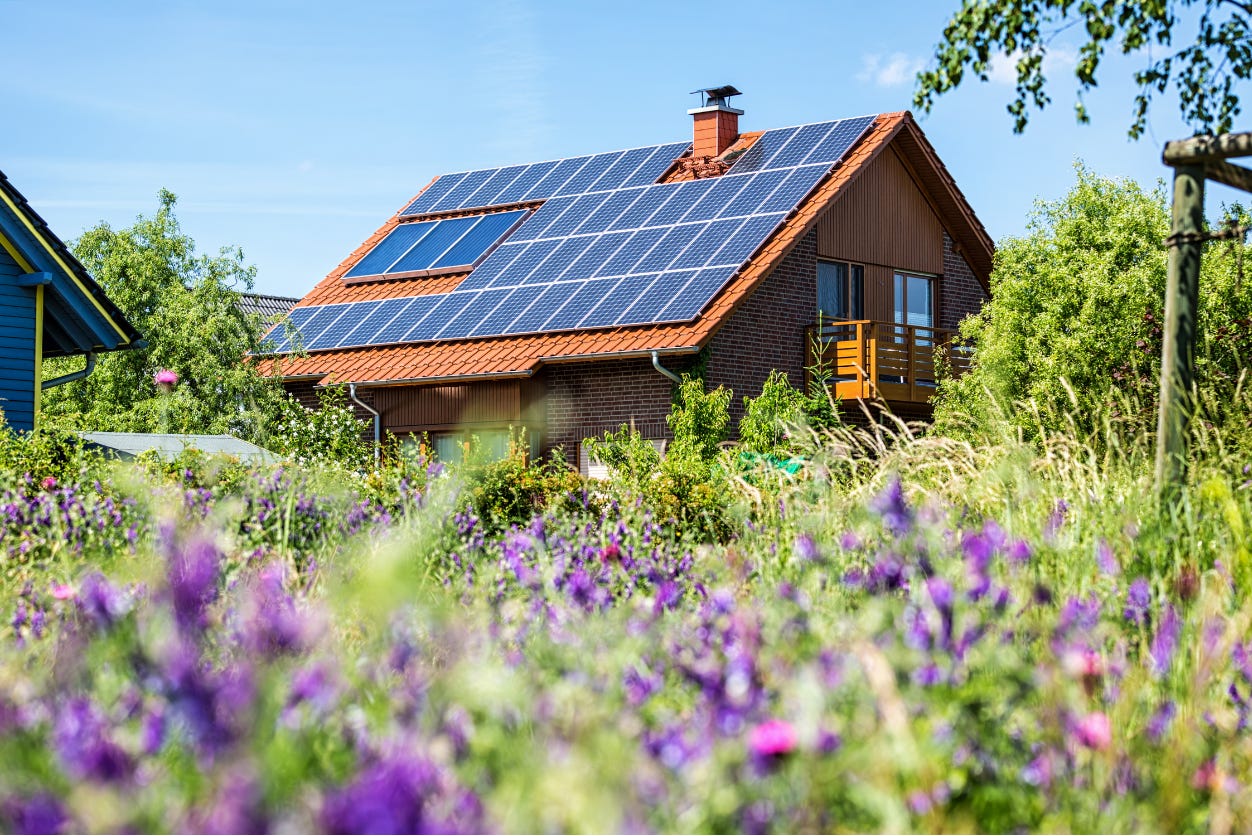How To Support Energy Independence — Wherever You Live
Everyone can help flip the switch to clean energy
July 10 is Global Energy Independence Day: a reminder to think about where our energy comes from, how to reduce our reliance on fossil fuels, and support clean energy.
While the term energy independence may conjure images of off-grid homes, the truth is that everyone can help accelerate the shift to green energy, whether you own a house, rent an apartment, or live in a high-rise condo.
Here are seven ways to flip the switch from polluting fossil fuels to clean energy — no matter your address.
1. Tap into solar power
If you’re a homeowner, rooftop solar is one way you can make a big impact. Solar panels provide you with clean energy, reducing your reliance on fossil fuels — especially if coal or gas plants are in your region’s electricity mix. When you produce your own electricity, you draw less power from the grid — especially during peak hours — which helps avoid blackouts. If your area has net metering, you can feed excess power back to the grid, supporting your local energy supply. Find out if your region or utility offers rebates, tax incentives, or net metering.
Solar isn’t just for those who own their roof. Renters and condo owners have growing options too:
Community solar programs allow you to subscribe to a shared solar farm and receive credits on your electricity bill.
Plug-and-play balcony solar kits, increasingly popular in Europe and emerging in Canada, let you offset your own power use with small, self-installed systems.
Portable solar chargers can power your devices off-grid — ideal for camping, travel, or emergencies.
2. Replace your furnace (and AC) with a heat pump
If you want to get the gas out of your home, consider replacing your furnace with a heat pump. An air source heat pump uses electricity to heat (and cool) your home, and they are far more efficient than traditional furnaces or baseboard heaters. Cold climate units can even work throughout Canadian winters. You can get whole home units that connect to your ducts, or ductless units that are installed in different rooms.
3. Explore battery backup and smart storage
As extreme weather and grid disruptions become more common, energy resilience is more and more important. Homeowners might consider a whole-home battery system (like Tesla Powerwall or similar) to store solar power or provide emergency backup. Renters and apartment dwellers can investigate portable solar generators or rechargeable power banks to keep essentials running in a blackout.
4. Bank for a bright future
When you put money in the bank, it doesn’t just sit in a vault — the bank invests it. And many banks are known for funding fossil fuel expansion. Switching where you bank is one of the most powerful — and overlooked — ways to support climate solutions. Use Bank.Green or Banking on Climate Chaos to find out where your current bank stands.
If you decide to switch, choose a credit union or ethical bank that funds local clean energy and sustainability projects. In Canada, options include Vancity, Kindred Credit Union, or Alterna. And make sure to tell your bank about why you’re taking your money elsewhere.
5. Invest in the energy transition
Whether you manage your own RRSP or contribute to a workplace pension, you can harness your savings to fund the shift to green energy.
Ask your advisor or pension provider about fossil-free or ESG-aligned investment options.
Look for funds that support renewables, clean tech, and sustainable infrastructure.
Consider community investment funds, green bonds, or platforms that allow you to invest directly in solar co-ops or energy startups.
6. Choose renewable power through your utility
Many utilities now offer the option to power your home with electricity generated from renewable sources like wind, solar, or hydro. Ask your utility if they offer a green energy plan, or explore third-party green power providers in your area. In some cases, it may cost a little extra — but you’re helping build demand for clean infrastructure. Or it might even save you money.
7. Advocate for green energy where you live
Whether you own your home, serve on a condo board, or rent an apartment, you can be a voice for smarter, cleaner energy systems in your building or neighbourhood.
Encourage your landlord, property manager, or condo board to explore solar panels, heat pumps, or EV chargers.
Suggest LED lighting or motion sensors to reduce energy consumption.
Join a local climate action group advocating for clean energy policies at the municipal or provincial level.
You don’t need to go off-grid to support energy independence. Whether it’s how you power your home, charge your phone, or invest your money, you have more influence than you think.




That's awesome! We've put investments into WealthSimple (Canada), in funds that exclude fossil fuels, weapons manufacturing, defence contracting, tobacco, alcohol, adult entertainment, and any other nefarious activities in violation of the UN Global Compact. I plan to do a full post at some point about banking and investing, as this has a huge climate impact.
Your point about switching your banking is such a salient one. I switched to Triodos last year, and it feels SO GOOD knowing my savings aren’t growing because of arms sales or fossil fuels. Can’t recommend highly enough! For those in the UK, Good Energy is affordable fantastic energy company to check out. I have used them for years.